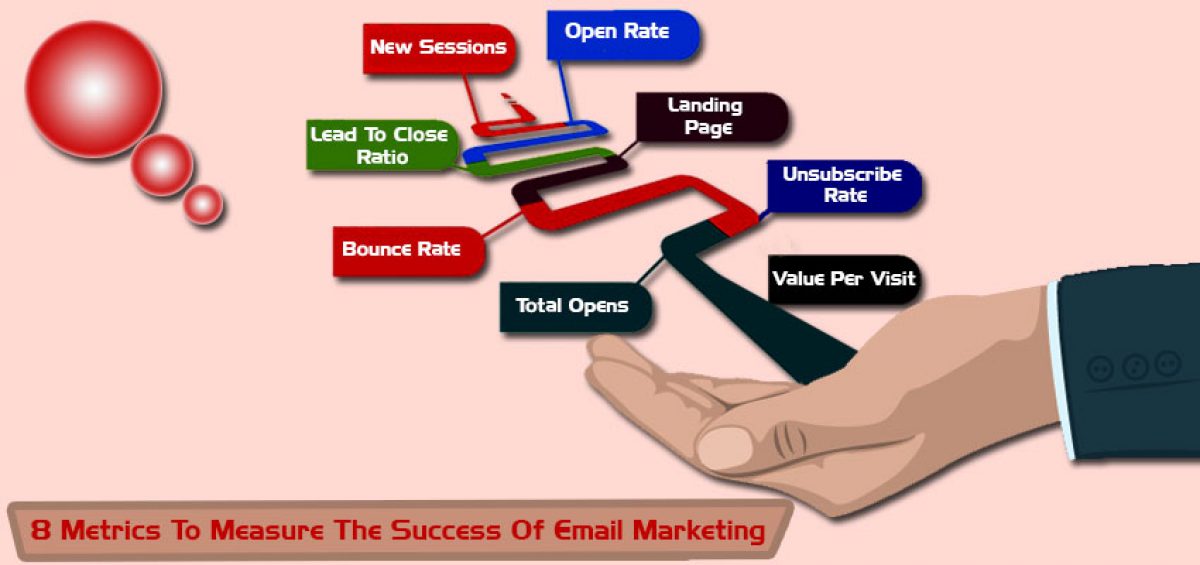Email marketing is a great way to communicate with your audience through emails. But how you measure the success of your email marketing strategy. Here we have the top 8 measure the success of email marketing? Well, when it comes to Email Marketing! There are key metrics which you should be watching.
However, these metrics can prevent you from paying more than you should have to for email service, sending emails that might get sent to the spam filter, and angering your subscribers. Now, having stuff at Email, we moved to a question as:
When was the first email sent? Quite easy! Approx 46 years ago, the first email was sent.
Since then, sensible marketers across the globe who have emailed their strategies are trying to maximize their potential and figure out how to measure its effectiveness and success.
Thus, this is what we are elaborating here! Keep reading…
Metrics To Measure The Success Of Email Marketing
Following are the metrics to measure the success of email marketing as follows:
1. Open Rate
The open rate is mostly the figure that marketers or advertisers concentrate on. It denotes how many people have seen your email.
Generally, we are searching for the possible higher number here. Hence, the higher the number the higher the chance to convert them or drive them to your website.
2. New Sessions
A metric found in Google Analytics, the aggregate number of new sessions will disclose to you what number of your site guests are new and what number of are repeating.
It’s a decent metric to comprehend in light of the fact that it lets you know whether your site is sufficiently sticky to support repeated customers. And in addition, how successful your effort is.
For instance, on the off chance that you change the structure of your web page. Essentially and your proportion of repeating guests to new guests drops. It could be an indication that your site is losing viability in justifying different visits.
3. Unsubscribe Rate
The unsubscribe rate is a solid marker of how you’re informing and resounding with your gathering people in additional time. There are numerous approaches to limit your email withdraw rate.
However, it boils down to understanding what information you are gathering of people, constantly needs to see from your business. Remaining lined up with the interests and assessments will go far towards keeping your withdraw rate low over time.
If your rundown does not get exactly a 2% to withdraw rate. Then, that is typical for general verticals. In the event where your withdraw rate is higher than the time has come to reexamine your way to deal with your email list.
4. Conversion rate On Your Landing Page
Mostly person thinks better click rate it means their work is done. But, a real test of a better Email Campaign is whether that click drives a conversion.
For example, you run a digital marketing course. You send an email to the subscribers promoting the course and direct them to the landing page.
5% of your subscribers click through to the landing page, but how many of that person then sign up for the course?
That’s the correct measure of how your successful campaign was.
You can track your email conversions by creating a tracking URL from the Google Analytics and placing that link in your newsletters.
5. Value Per Visit
The value of a visit is fixing specifically to the interactions per visit. This can be calculated just as the number of visits divided by the total value created.
Ascertaining esteem per visit is troublesome in light of the fact that there are numerous intangibles included that make it difficult to characterize. For instance, blog guests create value each time they add a site hit to your activity.
Additionally, visitors on E-commerce website create value each time they buy an item. Well, if you wish to know the E-commerce web design trends, then, feel free to move along with our blog on 10 Best Upcoming E-commerce Web Design Trends to Adopt in 2018.
However, they likewise make a to some degree limitless esteem when they leave an item survey.
6. Total Opens
This is a pretty simple metric that evaluates, How many people opened the emails that you sent out?
This metric can give you a good general insight into the relevance of your mailing list and the effectiveness of your subject lines. Once opened, It’s time for the body of the email to do its work.
7. Lead To Close Ratio
This is less a measure of your marketing efforts and progressively a measure of your business achievement.
Yet it’s essential to comprehend with regards to your aggregate rate of return. Without effective and fruitful deals development, any leads you to get from showcasing could be futile.
This metric is anything but difficult to characterize: essentially divide a total number of sales by your total number of leads and you’ll get a proportion that characterizes your business achievement autonomous of your showcasing endeavors.
8. Bounce Rate
The bounce rate demonstrates to you what level of guests leave your site before additionally investigating your site.
For instance, if a potential guest finds your landing page subsequent to hunting down you and leaves the page before clicking whatever other connections, they will be considered to have bounced.
Generally, you need the rate to be as low as conceivable on the grounds that the additional time somebody spends on your site, the more probable they are to change over and perform an important activity.
Conclusion
Here, in this blog, we have discussed 8 Metrics To Measure The Success Of Email Marketing.
Often we concluded its layout, its definition, and the metrics for the same in detail. They do add value to any blog post. And, this leads to the end of the blog.
We hope this blog helped you. However, if you found the blog useful, do not forget to use the comment section provided below. Also, share the blog with your peers. You are on your way to getting more exposure.










Leave a Comment